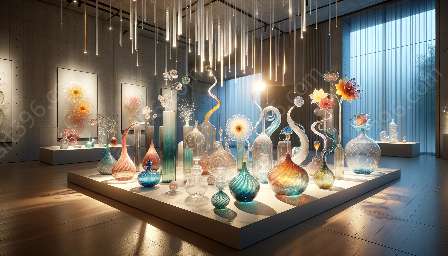Fused glass art is a captivating form of visual expression that involves melting and fusing different glass elements to create stunning pieces. Artists have continually explore and push the boundaries of this art form, looking for unique ways to add depth, texture, and visual interest to their creations. One such innovative approach is incorporating metal elements into fused glass art, expanding the possibilities for creating striking and dynamic pieces.
Understanding Fused Glass Art
To fully appreciate the impact of incorporating metal elements in fused glass art, it's essential to comprehend the basics of fused glass art itself. Fused glass art involves heating glass to a high temperature in a kiln, causing it to melt and fuse together. Artists can layer different colors, shapes, and textures of glass to create intricate designs and patterns. The result is a versatile medium that allows for endless creativity and artistic expression.
Benefits of Incorporating Metal Elements
Integrating metal elements, such as copper, silver, or gold, into fused glass art can elevate the visual appeal and conceptual depth of the artwork. The reflective properties of metals can create luminous accents within the glass, enhancing the interplay of light and shadow. Additionally, the juxtaposition of metal against glass adds a tactile dimension, inviting viewers to not only admire the artwork visually but also experience its physical textures.
Compatible Techniques
The process of incorporating metal elements into fused glass art involves specialized techniques that seamlessly integrate metal and glass. One common method is using metal foils, which are thin sheets of metal that can be cut and shaped to fit within the glass layers. These foils can be fused between or on top of glass layers during the kiln-firing process, resulting in a harmonious fusion of metal and glass.
Compatibility with Glass Art
The compatibility of incorporating metal elements with glass art is inherently intertwined with the broader principles of glass art itself. Both mediums share a profound appreciation for transparency, luminosity, and the transformative effects of light. By combining metal with glass, artists can further explore the dynamic contrasts between solidity and ethereal luminosity, creating a balanced interplay of elements.
Exploring Techniques
Artists experimenting with incorporating metal elements in fused glass art often employ various techniques to achieve different visual effects. For instance, utilizing wire, mesh, or metal beads within the glass layers can create intricate patterns and textures, adding depth and complexity to the overall composition. Artists may also explore techniques such as kiln-formed metal inclusions, which involve fusing metal particles directly onto the surface of the glass, producing captivating surface textures and reflective accents.
Inspiration and Innovation
The integration of metal elements in fused glass art opens up new possibilities for artistic innovation, inspiring artists to push the boundaries of their creativity. By embracing the union of metal and glass, artists can infuse their works with a sense of alchemical transformation, where the fusion of disparate elements gives rise to compelling narratives and visual dialogues.
Conclusion
Incorporating metal elements in fused glass art represents a captivating synergy of two distinct yet complementary artistic mediums. Through the conscious interplay of metal and glass, artists can imbue their creations with a multi-dimensional richness that captivates the imagination and evokes emotional resonance. As artists continue to explore and refine these techniques, the fusion of metal and glass in art will undoubtedly continue to evolve, inviting viewers to behold the beauty of their harmonious union.

